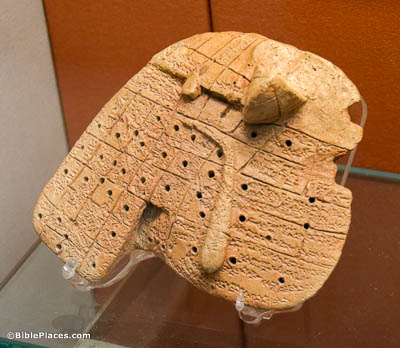He did evil in the sight of Yahweh, like the abominations of the nations Yahweh had cast out (2 Kings 21:2).
One of the major components of doing “evil in the sight of Yahweh,” as confirmed by the following text, was the worship of false gods. Such worship was specifically prohibited in the Decalogue, yet was practiced by the Israelites as early as the time of Aaron (Exod 32:1-7). Particularly in the early stages, such worship was almost certainly rooted in Egyptian religious practice, illustrated here by a somewhat later example of an Egyptian king worshiping one of the many Egyptian deities. This relief comes from the monumental gate at Bubastis. It was photographed at the British Museum.





